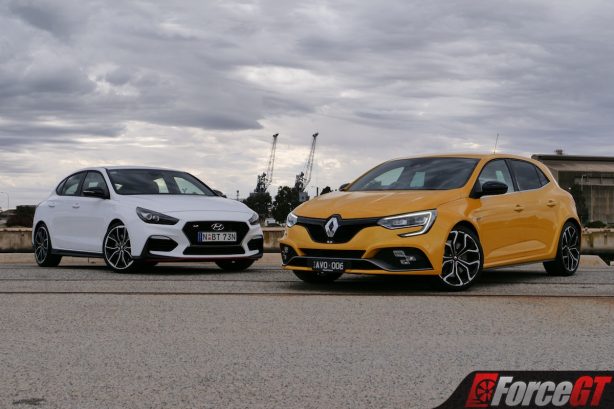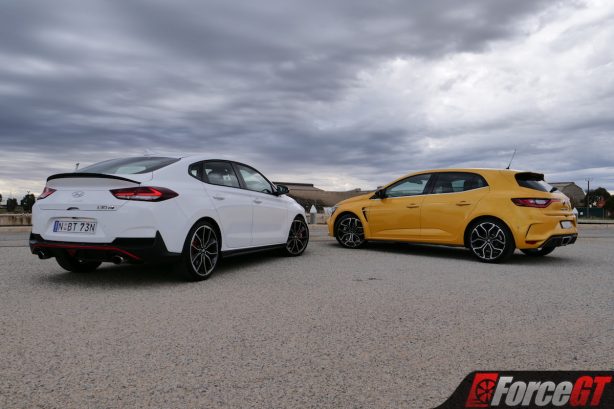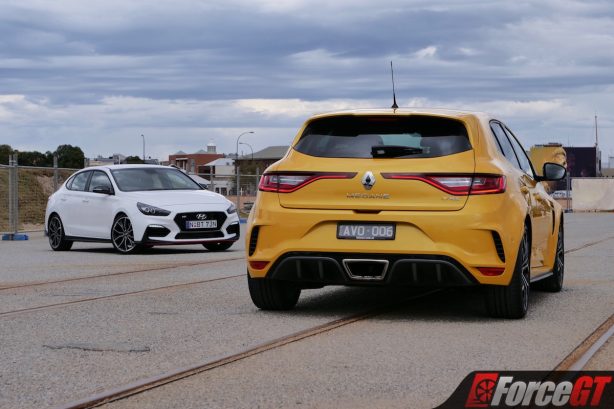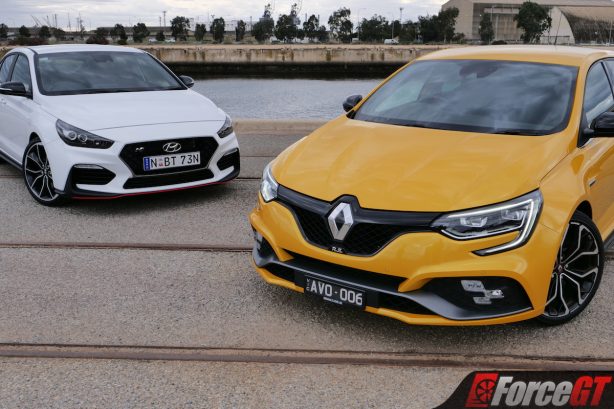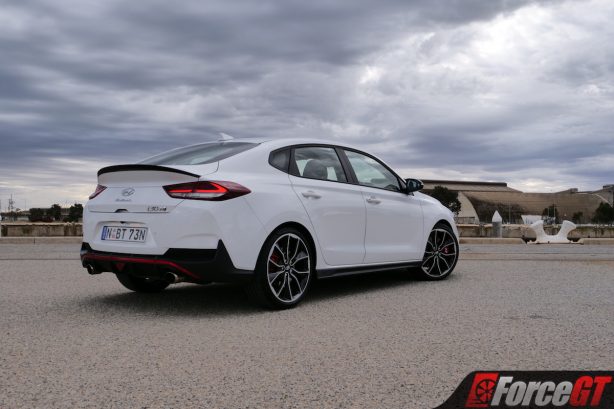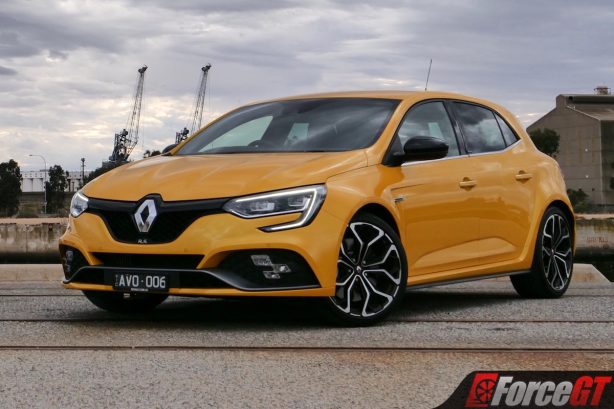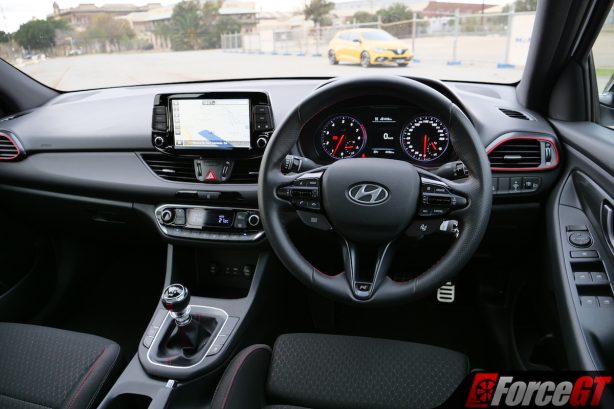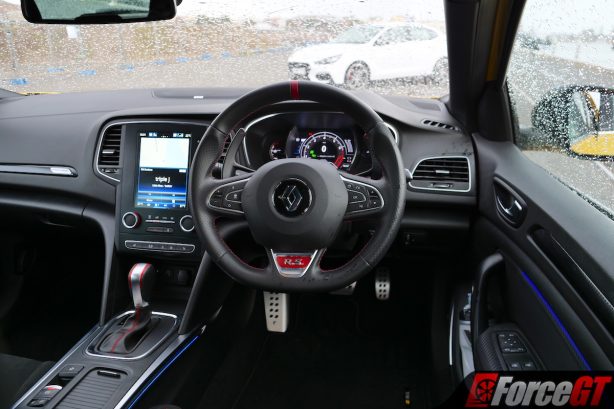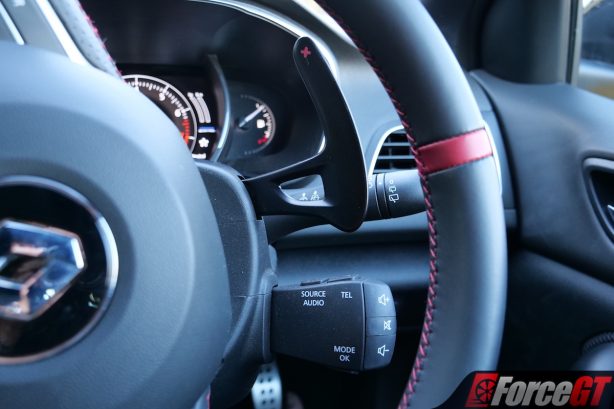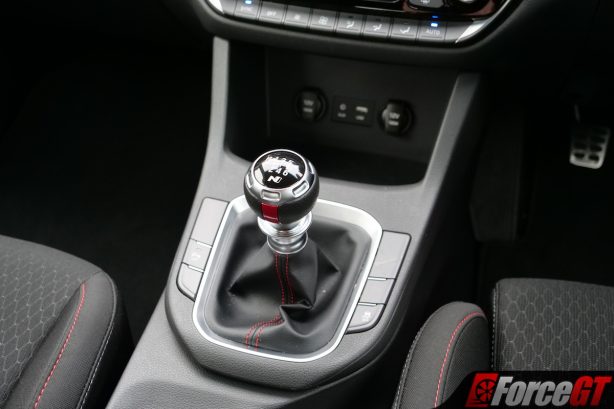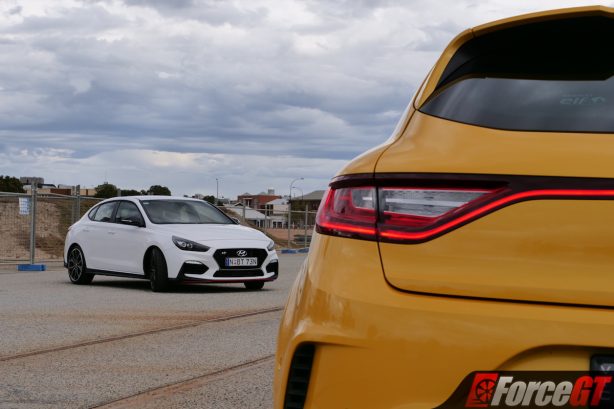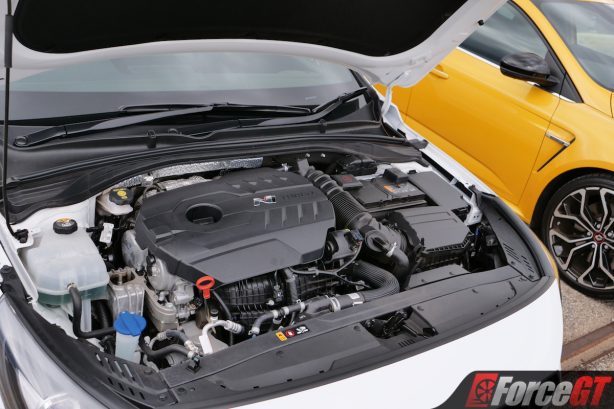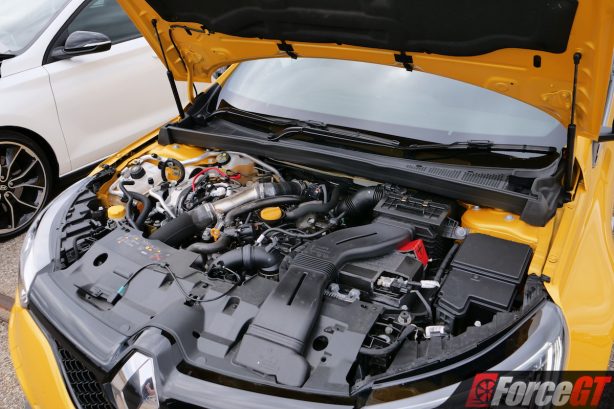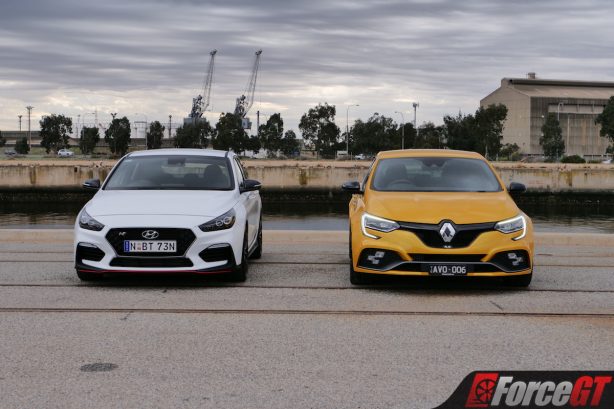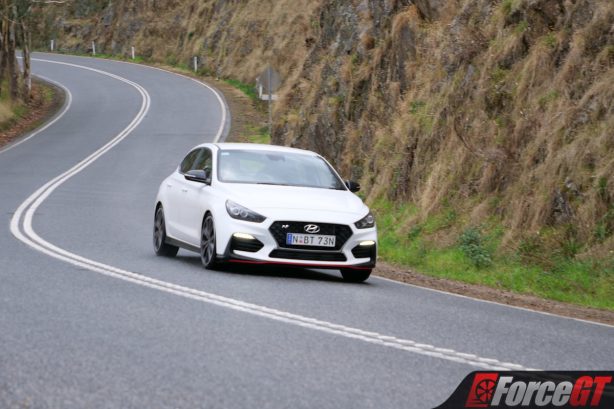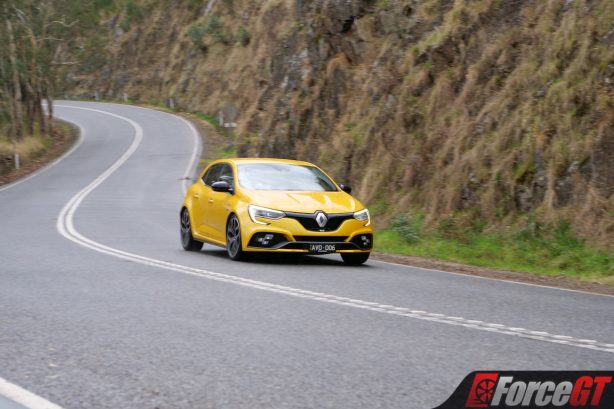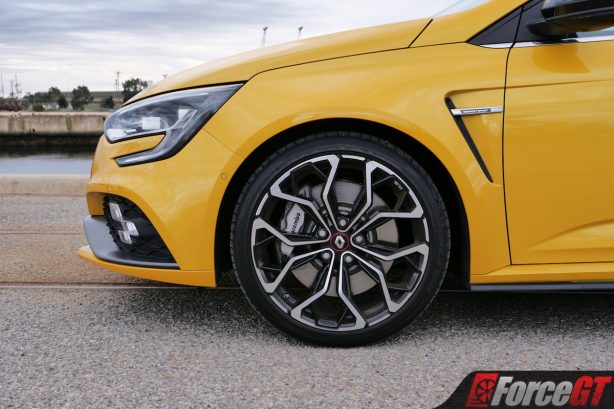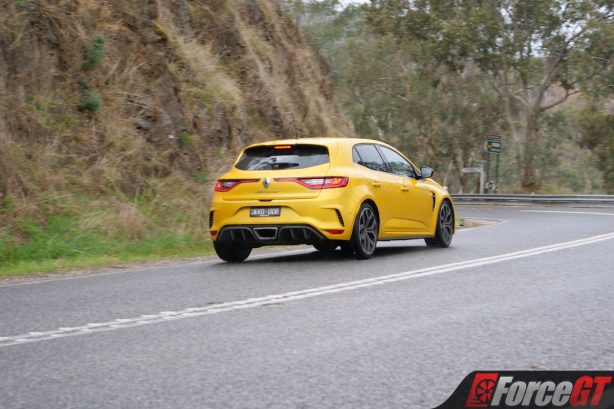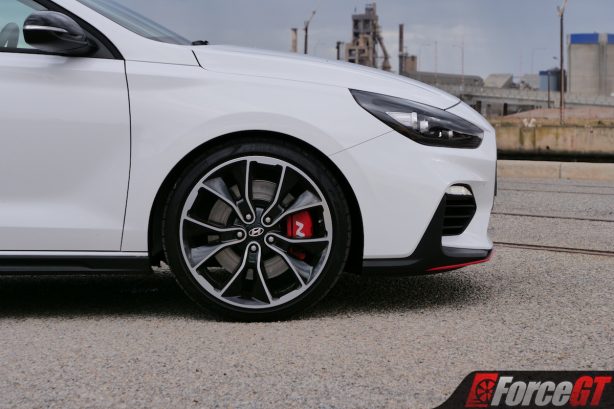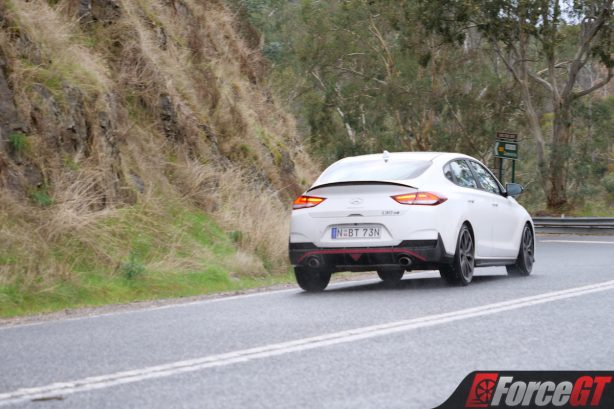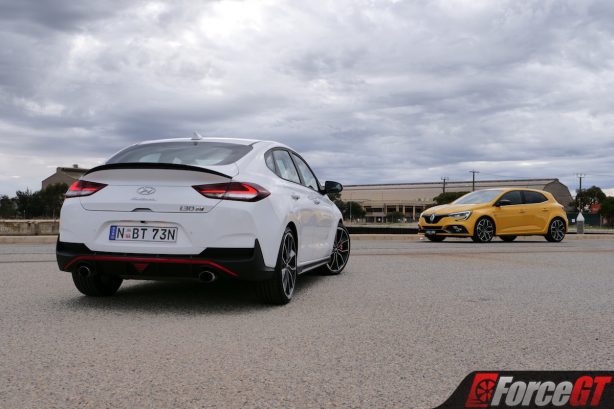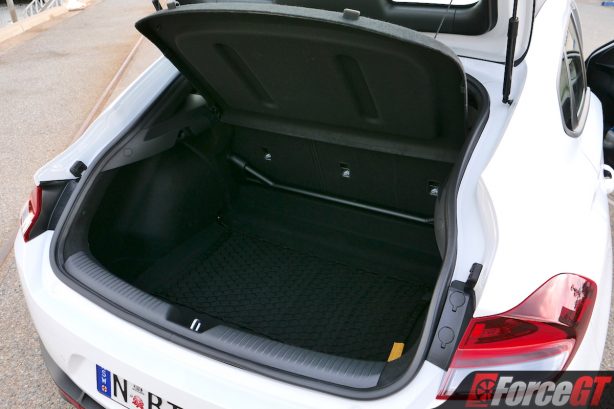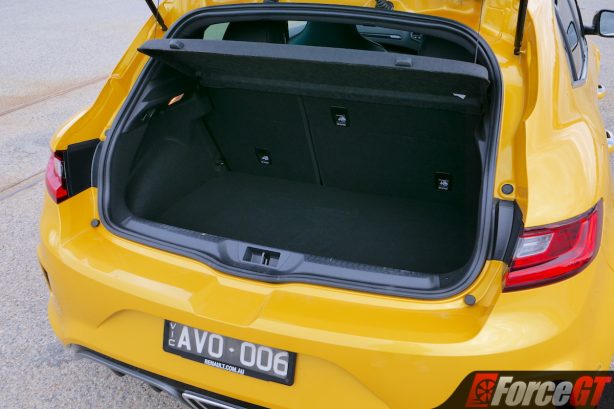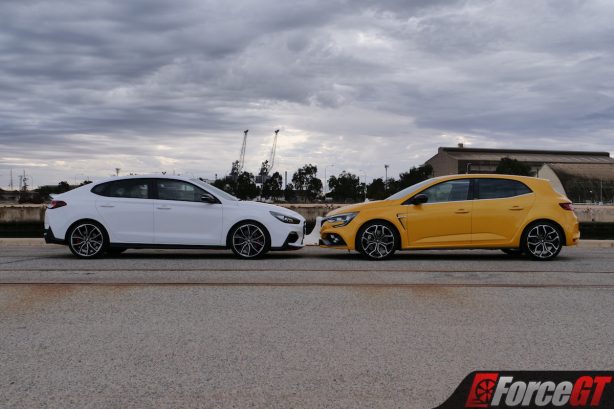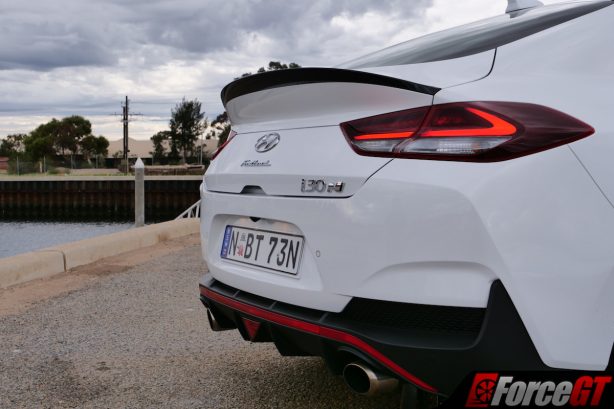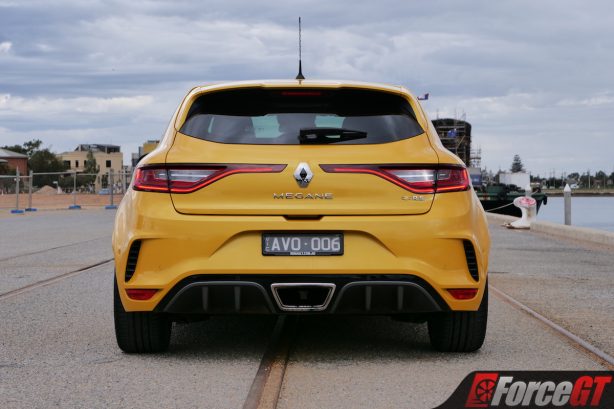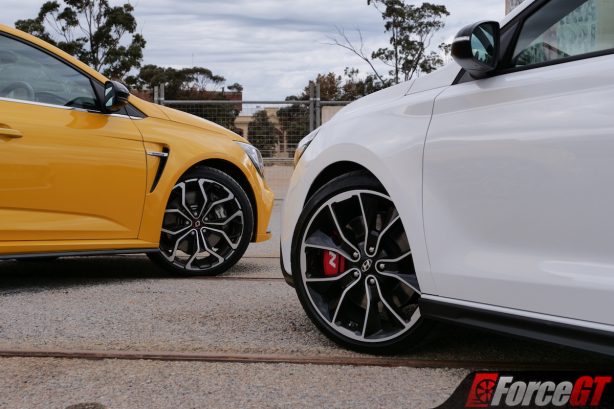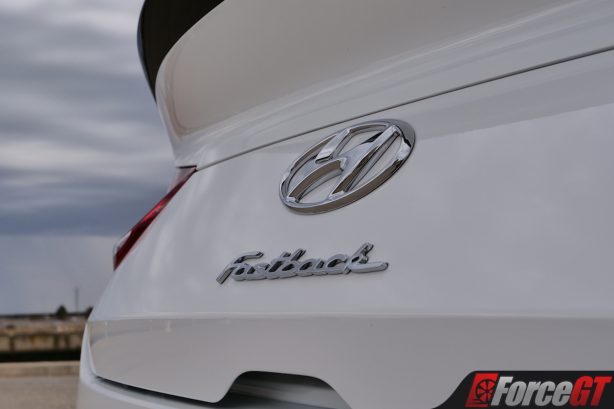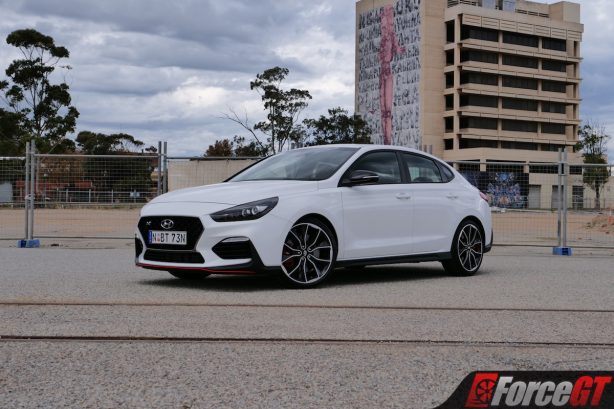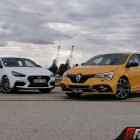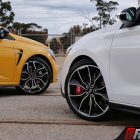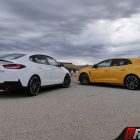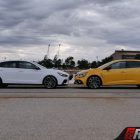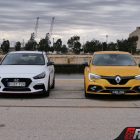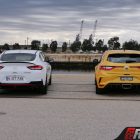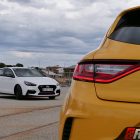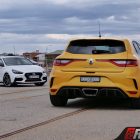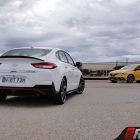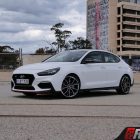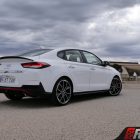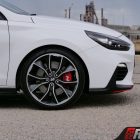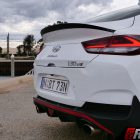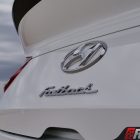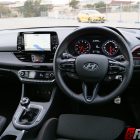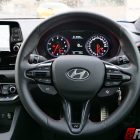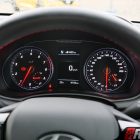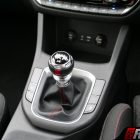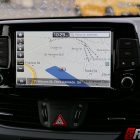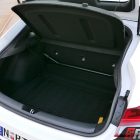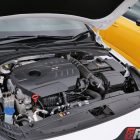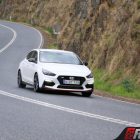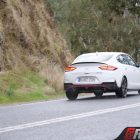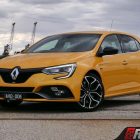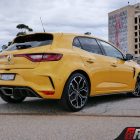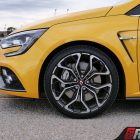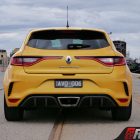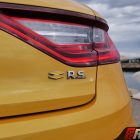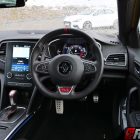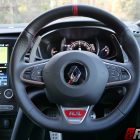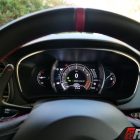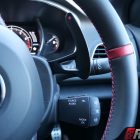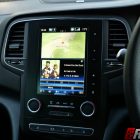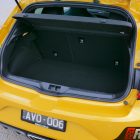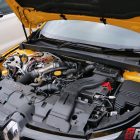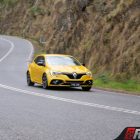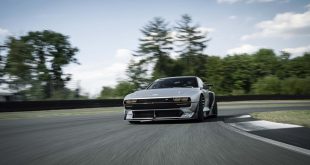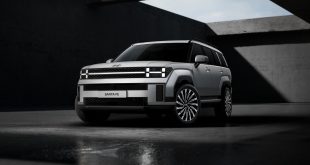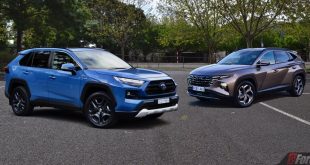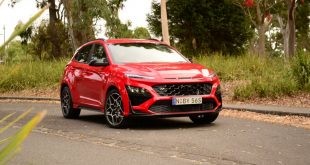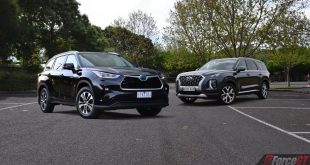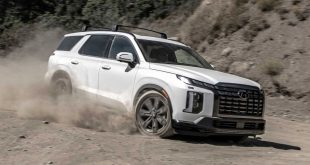The Hyundai i30 N first burst onto the scene at the start of 2018 with one big goal of taking on the hot hatch hierarchy and proving its place as the South Korean company’s first proper hot hatch.
And do that it certainly did. Offering up better performance than many rivals for a lesser spend and positioning itself as a true driver’s car by being offered exclusively with a six-speed manual transmission, it’s a car that quickly wormed its way into our hearts as one of the best hot hatch buys on the market.
But now that the i30 N hatch has put in the hard yards as an all-out balls-to-the-wall hot hatch, Hyundai has decided to put it in a suit and make it look more mature and presentable – and to help it compete with Euro rivals higher up in the food chain – as the i30 Fastback N you see here.
Although the European market will receive normal i30 Fastback models, the N is all we’ll be getting Down Under, and there’s some performance-based justification to its adoption into the local range. For one, it’s more aerodynamic, with a slipperier 0.29 drag coefficient compared to the hatch’s 0.32Cd, helping it shave a tenth of a second off its 0-100km/h time, bringing it down to 6.1 seconds.
There’s also a new softer suspension setup (which is destined for the MY20 hatch as well) that’s aimed at being better on the road where it will spend most of its life at the cost of dampening its track performance. Also making it easier to live with, supposedly, is its larger 436 litre boot, compared to the hatch’s 381 litres.
But to see if this four-door coupe can still hold its own in a sea of hot hatchbacks, we’ve brought it together with one of the latest entrants to the scene – the Renault Megane R.S. 280 Sport.
Aside from just being the latest hot hatch to enter the market, the Megane makes a good case for itself as an i30 Fastback N competitor as it’s presenting itself as more grown-up than the other RenaultSport models that have predated it. Classy looks, improved cabin materials and technology, and options such as a premium stereo are all targeted at making the Megane a better daily driver as well.
And that’s not to mention the elephant in the room, which is that while all i30 N models are fitted with a DIY manual gearbox, this Megane R.S. – which is the exact same one our Melbourne team got their hands on late last year – has a self-shifting dual-clutch unit for the first time.
Now before you manual fanboys hurl your computers off your desks in rage, you can still have the Meg with a manual if your only reason for buying is to have some fun with it, but it’s this dual-clutch model that’s aimed at those wanting a hot hatch that will also be a daily driver. Oh, and for the record, the i30 N is set to be receiving a dual-clutch auto later this year as well – such is what the market demands.
So, with all of that context in mind, let’s find out which of these more grown-up hot hatches is the one you should be putting your money down on.
On the outside
Right off the bat, the i30 Fastback N sets itself apart from… well, basically every other hot hatch out there by serving up more of a four-door coupe-type look – similar to models from other companies that are similarly designated as sportbacks, liftbacks, or even Gran Coupés if we’re talking about BMWs.
While we like everything on the i30 from the B-pillar forwards – which is all identical to the hatch – such as the aggressive nose with the red-accented lip spoiler and those nice big alloy wheels, we aren’t entirely sold on the new swoopy rear end yet. Simply, it comes down to the i30’s short wheelbase and overall length – while it could work if the whole thing was as long as an Elantra, here is unfortunately looks like the rear end has been lopped off, or like the designer fell asleep midway through drawing it up.
Certainly, I’m not going to say that it’s in any way ugly. It’s more unique than anything, and I’m sure it will appeal to fans of cars like the Mercedes CLA, which it clearly draws at least some inspiration from.
The other downside to the Fastback’s styling is that it loses so much of what makes the hatch look so great from behind – the aggressive roof spoiler, the triangular third brake light, and the affect of the flared arches simply disappear here. It looks more grown-up now, certainly, but for a car this raucous, I’m not sure if a suit is the right look.
The Renault, on the other hand, ticks all the right hot hatch styling boxes. Most prominent when compared to the standard Megane is its widebody treatment, which adds noticeably wider side skirts and wheel arches that give it an unmissable presence.
Further enhancing the Renault’s looks is the distinct central exhaust – although two smaller pipes do hide away inside that one big chrome bezel – and more intricate and interesting alloy wheel design.
While both of these cars are real head-turners, when it comes to comparing hot hatches, how could the bright orange one with pumped-up wheel arches not take the cake?
Winner: Renault Megane R.S.
On the inside
As you might expect, the insides of these cars do mirror the outsides rather accurately. The Hyundai, while it serves up a high quality interior with inoffensive materials and excellent fit and finish, does feel to be rather toned down by hot hatch standards.
Differentiating itself from the hatch, the Fastback does wear some red bezels around its air vents, but it loses the baby blue drive mode selector paddles, and other than the odd bit of contrast stitching here and there, it does feel to be perhaps overly sensible.
That’s not a bad thing, however, as it does mean everything in the i30’s interior makes sense. The controls for every function are exactly where you’d expect to find them, the dials are clear and easily legible, and the infotainment system is dead simple and user-friendly. Sure, Hyundai could have painted it all bright orange if it wanted, but it instead chose to make it all work, and it feels driver-focused as a result – exactly what you want in a car like this.
Making it all the more pleasant for the person in control, the N-specific steering wheel is the perfect size when it comes to diameter and thickness, and the gearshift is in the perfect spot as well. It’s seats are very supportive and comfortable as well, regardless of whether you have the standard seats as our test car did, or the even nicer Alcantara-clad ones included in the optional Luxury Pack.
The Renault, meanwhile, backs up its boy-racer looks with an interior to match. There’s faux-carbon trim everywhere, lots of red stitching and branding, big screens, and bright multi-colour ambient lighting that changes with each drive mode. It’s an entertaining place to be, no doubt.
However, it suffers from a few ergonomic issues that spoil the experience a tad. For one, its fully digital gauge cluster might look the part, but the speedo is incredibly laggy, often jumping up in intervals of 9km/h under heavy throttle.
Button placement is also more of a mixed bag than in the Hyundai, with the cruise control switch located on the transmission tunnel, two different drive mode selector buttons within 10cm of each other, and the silly radio control stalk coming off the steering column.
Not only is that stalk impossible to see, meaning you never know what you’re actually controlling, but it means the paddle shifters suffer badly from a compromised design. Simply, they’re far too small to actually use, and with them fixed on the column at the 10 and 2 o’clock positions, they’re in the wrong place as well.
And while the big, heavily-bolstered bucket seats may look impressive and like they’d be supportive, they’re actually rather difficult to get into due to the tall leg bolsters and aren’t as supportive as you’d really like once sat in them.
The Renault might feel more like a hot hatch inside, we’ve got to give this round to the Hyundai as while it may be a simpler interior design, it’s one that feels better-made and simply works in every regard.
Winner: Hyundai i30 Fastback N
Performance & Handling
Now, for the bit I don’t doubt you’re all here for – the way these two hot hatches drive, and just like everything else so far, the two continue to go punch-for-punch in this department.
When it comes to what’s under the bonnet, things are fairly evenly matched, although there’s a clear winner in the power stakes. Both offer up turbocharged transversely-mounted four-cylinder engines, and both are front-wheel drive, but that’s where the similarities end.
The Hyundai’s engine is the larger of the two, measuring in at 2.0-litres, while the Renault’s is a tad smaller at 1.8-litres. So the Hyundai is the more powerful of the two, right?
If you presumed that, I’m afraid you’re wrong. Despite the extra displacement, it’s 202kW and 353Nm power and torque figures lag behind those of the Renault’s busy little engine, which churns out 205kW and 390Nm.
But the i30 N fires back by making up for most of that torque defecit with a special overboost function, that turns up the boost on full throttle for up to 18 seconds allowing it to produce a more competitive 378Nm.
It gets even more complicated still when you consider that the Hyundai is slightly lighter and makes more of it’s torque throughout more of the rev range, yet the Renault’s higher outputs and snappy automatic shifts ensure a slightly higher power-to-weight ratio and 0-100km/h time respectively.
And since I’ve mentioned the Renault’s self-determined shifts, I should once again point out the biggest point of difference between the two cars on test – their transmissions. For both the i30 N Fastback and hatch, a six-speed manual is currently the only option, while our Megane had been optioned up with a six-speed flappy-paddle dual-clutch auto.
As I was the one to pull up to our photo spot on the day of the shoot-out in the Renault, I told our Adelaide editor Kevin Lee, who accompanied me on this test, of my woes with the at-times clunky and indecisive nature of the Megane’s auto around town.
“But automatics are what the market demands, and besides, the i30 N should have a dual-clutch by the end of the year, too,” I conceded.
To that, Kevin simply smiled and responded, “But why would you want the dual-clutch anyway?”
And he’s got a point – hot hatches are all about driver engagement and extracting every bit of power the thing’s got to give, so despite how good dual-clutch ‘boxes are these days, you simply can’t beat the i30’s tight, snickety manual shifter for how it makes you as the driver feel. That is to say, totally in control.
When it comes to serving up a driver-focused experience, the i30 N is absolutely bang on the money. Not only is the gearshift lovely, but its auto rev-matching on downshifts is a genius inclusion, and the clutch feel is naturally progressive and perfectly-weighted, with all that meaning it’d be incredibly easy for even the most inexperienced of manual drivers, while also making it a doddle in traffic, too, which was what we encountered on the first leg of our drive.
Setting off into the Adelaide Hills to put these hatches through their paces – just as the rain from those clouds above us hit – the main reason I opted for the i30 Fastback N for the first leg was that I knew that section had some fairly shoddy road surfaces and wanted to put its new suspension tune to the test.
And as we weaved through the traffic clogging the pothole-ridden city streets that led to our less-congested testing roads, it proved to have done the trick. With everything left in its standard settings, the Fastback N now feels just as comfortable as any other i30 in the range – a very good thing, given it’s one of the better-riding hatches out there.
The Megane, on the other hand, did suffer from some issues when it came to city driving, chief among which is its transmission. While the dual-clutch unit is smooth and accurate when driven very gently, it would hold onto gears for far too long after downshifting when you put your foot into it to duck into a gap in the traffic.
Additionally, it suffered from a few other common negative DCT traits, such as it being jittery when setting off or when creeping forward in traffic – although the latter isn’t something you should ever do if you can avoid it.
The ride in the Renault wasn’t quite as comfortable when left in Neutral mode, either. Certainly, it wasn’t uncomfortable, but it was a tad jigglier over potholes and the like when compared to its Korean competition.
But with the city behind us, the tables turned somewhat to favour the Megane instead. Throwing it into Sport mode – Race mode was off the cards on the day given how soggy it was on the roads and that it switches off the car’s traction control system – it only firmed up the suspension enough to help it feel even flatter through the bends, and it dealt with mid-corner hits commendably well for a car so rigid.
The steering feel was weighted up appropriately, too, adding to the direct and confident feeling the Renault exhudes. And then, just to top it off, there’s the Meg’s party trick – its four-wheel steering system.
A unique feature to boast when it comes to a game of hot hatch Top Trumps, the Renault’s four-wheel steering really makes it feel like something else through the corners. Simply calling it one of the tightest-handling hot hatches out there wouldn’t do it justice, as few cars inspire as much confidence on the entry to a corner as the Megane.
It’s not without its faults, however, as when you’re exiting a bend, you’ll encounter the one issue it seems Renault’s engineers haven’t accounted for – torque steer. With this much power going to the front wheels alone, you really need a better differential than what the Meg’ has, as even in the dry, it just spins all the power away with even the slightest hint of steering angle.
But off the line, too, it struggles to put the power down – even when using the complicated launch control system, it only delivers the scent of burning clutches and rubber, and not the sensation of a sub-six second 0-100km/h run.
And this is where the i30 hits back confidently by serving up one fantastic front diff that really shows you how good a powerful front-drive car can be. An adjustable electronically-controlled limited-slip unit, it allows you to put on the power at completely inappropriate times – and in inappropriate conditions – and it handles it all with aplomb.
Seriously – stamp on the throttle right on the apex of a corner and it’ll sort the whole thing out without any drama. It’s a right marvel, this thing, and feels far more tractable in all conditions than the Renault.
Like its yellow-painted foe, it corners flatly and precisely, too with the suspension firmed up and the steering made heavier, although if we’re being picky, both may be just a tad overdone.
While I personally like how heavy you can make the steering when you throw it into N mode, I have heard some feel it is too heavy, and I can certainly see why they’d think that. But the weight of the steering is nothing compared to the firmness of the suspension in N mode, which is shockingly firm.
For a car so comfortable around town, it feels almost racer firm over the shoddy surfaces it faced. Over mid-corner bumps and cracks in the road, it had a tendency to almost bounce like a lowrider – it’s just that firm. Thankfully, you feel most of that through the tiller, and not through your backside, however.
The other area it lagged behind the Renault was in terms of pace. Despite the numbers being very, very close, the Renault always managed to pull away from the Hyundai, if only just. Who knew 3kW and 12Nm could make so much of a difference?
But outright pace is only half of the story – it’s how the engines in these two make you feel that – to me, at least – is perhaps more important.
The Renault’s 1.8-litre certainly feels a punchy little thing, but with it demanding the finest 98RON due to its high compression ratio to eek out every bit of performance from what is an unusually small engine for the segment means that while it may feel faster, it does feel more strained.
On the other hand, the Hyundai’s 2.0-litre unit feels more freed up thanks to the added displacement. It also feels old-school in a good way, too – not only is there a tiny bit of fun-enhancing turbo lag from the big snail bolted to the back of it, but that overboost feature that turns up the boost is truly thrilling.
And then there’s the noise. The noise! Feel free to argue with me about this, but I truly believe the i30 N – Fastback or not – is the best-sounding hot hatch out there. From the piercing whistle of the turbo to the bark of its throaty exhaust tone, and then there’s the sheer amount of pops and crackles as you let off the throttle, it’s one magnificent sounding thing, particularly with the sound echoing off the sides of the hills.
It’s not to say that the Renault doesn’t sound good as well – it makes all the right hot hatch noises – but it’s exhaust note is merely a croon to the i30’s death metal scream, and it’s pops and crackles are more like rain on a tin roof than the heavy artillery soundtrack of the Hyundai.
While the Renault might technically be the faster of the two, and while both might be more tightly matched in this category than any other, I’ve got to give it to the Hyundai. Not only does it feel like more of a track-ready precision instrument, but it simply serves up more drama as well.
Winner: Hyundai i30 Fastback N
Comfort & Practicality
When it comes to talking about comfort, we’ve already touched on a lot of what these two do well. The i30 has the more comfortable and supportive seats – whether you opt for the standard ones or those that come with the Luxury Pack – and rides a lot better around town. It’s back seats are far more commodious too.
The Renault, on the other hand, feels less harsh when put into its more aggressive drive modes, and it does have softer spots for you to rest your elbows on, but rear seat legroom is almost nonexistent.
However, practicality is another thing entirely. A big part of the i30 Fastback N’s sell is that it has a bigger boot than the hatch, and that is true… well, to a degree, at least. While its 436 litre volume is larger than that of the i30 hatch, it’s as near as makes no difference the same as that of the Megane.
One of the issues facing the Fastback’s boot, however, is that due to the sloping roofline, it doesn’t offer as high a space to fit taller items in – an issue the more conventional Megane doesn’t have.
Furthermore, the i30 – regardless of body style – also has a strut brace in the boot as well, which manages to get right in the way when you have the seats folded down. It might make it better to drive, but what good’s a hot hatch if it isn’t entirely practical as well as a riot on the road?
As such, this category is too hard to conclusively call. If you need to haul people, get the i30, but if you’re moving a chest of drawers, the Megane is the far better option. This one, I’m afraid, is all tied up.
Winner: Tie
Dollars & sense
When it comes to running costs, the Renault does start to inch ahead in a couple of areas. While both cars require servicing every 12 months, the Renault’s mileage cap is double that of the Hyundai at 20,000km, helping to bring the cost down by reducing the regularity of services.
However, the Renault is ultimately let down by offering just three years of capped price dealer visits – compared to a lifetime plan for the Hyundai – and each of those three visits will cost you $399. Additionally, the cost of a new air filter, pollen filter, and accessory belt aren’t included in that. The i30 N’s plan, meanwhile, is all-inclusive, and charges just $319 a service on average.
Then there’s fuel consumption. Firstly, you can largely ignore our tested figures listed in the spec sheet below this article as that was reflective of us thrashing the pants off these things, meaning both saw similarly poor figures. More representative would be that after taking the Megane on a relaxed drive through the countryside, its fuel consumption dropped significantly to 10.1L/100km, while the i30 N hatch we tested last year saw us using 9.9L/100km.
That’s all much of a muchness, except that the Renault demands the finest 98RON fuel to ensure it makes top power, while the Hyundai can make do running 95RON instead.
The Renault does win back some points by offering four years of complimentary roadside assistance, however, compared to the Hyundai’s 12 months.
But there’s one all-important factor to consider, and that’s the cost of actually buying these things. As tested here, the Hyundai is worth over $8,000 less than the Megane. And even if you were to get rid of all the Megane’s options – or, conversely, to option the i30 up to its level – there’d still be a gap of at least $3,000. Opt for the i30 N hatch instead and that’s a further $1,500 you can shave off the price as well.
Simply put, $3,000 is a lot of petrol, and that easily makes up for the i30 drinking more heavily on the day of our testing.
Winner: Hyundai i30 Fastback N
Verdict
This head-to-head battle, like many we’ve had before, has seen these two truly go punch for punch with each other. There’s a lot to like about both of this pair, as both Hyundai and Renault have certainly taken different approaches to putting together a hot hatch, and since both of them are ultimately very good cars at the end of the day. However, there can only be one winner – even if it is a close call.
In the case of the Renault, the things that won us around most were its unique touches such as the widebody kit and the four-wheel steering that helped it look and drive the part. It was certainly the fastest car of the two – in a straight line, at least – which is something that will no doubt matter to some, but we couldn’t help but want for a little extra refinement from it when it came to the power delivery and some interior functionality.
While we’re still ultimately undecided on the i30 Fastback N’s looks, our minds are clearly made up on how it drives. It’s a real peach, the Hyundai, as despite the i30 N being its maker’s first truly hot hatch, it’s a perfect example of how to build one.
The power delivery is thrilling, the sound is bonkers, it handles as well as any front-wheel drive car out there, and Hyundai’s decision to only sell it with a manual gearbox (for now) shows that it’s a car that has been designed by enthusiasts and not accountants.
But most importantly when it comes to this showdown, it just managed to outclass the Megane in just about every respect – if by only a hair. While in a way it almost feels wrong to give the win here to the car that isn’t a conventional hatchback, it’s proven itself to be worthy of that title.
Overall winner: Hyundai i30 Fastback N
2019 Hyundai i30 Fastback N | 2019 Renault Megane R.S. 280 Sport EDC | |
| Design & Comfort | 8.5/10 | 8.0/10 |
| Performance & Handling | 9.0/10 | 8.5/10 |
| Quality | 8.0/10 | 7.5/10 |
| Economy | 8.0/10 | 8.0/10 |
| Equipment & Features | 8.0/10 | 8.0/10 |
| Our Score | ||
+ Pros |
|
|
– Cons |
|
|
Pricing and specifications
2019 Hyundai i30 Fastback N | 2019 Renault Megane R.S. 280 Sport EDC | |
| Price (Excluding on-road costs): | From: $41,990 As tested: $41,990 Tested options:
| From: $44,990 As tested: $50,180 Tested options:
|
| Warranty: | 5 years/unlimited km | 5 years/unlimited km |
| Warranty Customer Service: | 1 year roadside | 4 years roadside |
| Country of Origin: | South Korea (Built in Czech Republic) | France (Built in Spain) |
| Service Intervals: | 12 months/10,000km | 12 months/20,000km |
| Engine: | 2.0-litre turbocharged direct injection four-cylinder petrol: 202kW @ 6,000rpm, 353Nm @ 1,450-4,700rpm | 1.8-litre turbocharged direct injection four-cylinder petrol: 205kW @ 6,000rpm, 390Nm @ 2,400-4,800rpm |
| Transmission: | 6-speed manual | 6-speed dual-clutch automatic |
| Drivetrain: | Front-wheel drive | Front-wheel drive |
| Power to Weight Ratio (W/kg): | 140.2 | 141.4 |
| 0-100km/h (seconds): | 6.1 | 5.8 |
| Combined Fuel Consumption (L/100km): | Claimed: 8.0/Tested: 12.3 | Claimed: 7.5/Tested: 11.9 |
| Fuel Capacity (L): | 50 | 50 |
| RON Rating: | 95 | 98 |
| Body: | 5-door liftback, 5 seats | 5-door hatchback, 5 seats |
| Safety: | ANCAP not tested, 7 airbags, ABS, EBD, BA, VSC, Autonomous Emergency Braking, Lane Keeping Assist, Driver Attention Alert, Tyre Pressure Monitoring System, rear parking sensors, rear-view camera, ISOFIX Optional (not fitted): Blind Spot Warning, front parking sensors | ANCAP not tested, 6 airbags, ABS, EBD, BA, VSC, Autonomous Emergency Braking, Adaptive Cruise Control, Distance Warning, Blind Spot Warning, Tyre Pressure Monitoring System, surround parking sensors, rear-view camera, ISOFIX |
| Dimensions (L/W/H/W-B): | 4,455/1,795/1,419/2,650 | 4,364/1,875/1,435/2,670 |
| Turning Circle Between Kerbs: | 11.6 | 10.3 |
| Ground Clearance: | 132 | 115 |
| Kerb Weight (kg): | 1,441 | 1,450 |
| Boot Space (L): | 436/1,337 | 434 |
| Towing Capacity (kg): | N/a | N/a |
| Entertainment: | 8-inch colour touchscreen, satellite navigation, AM/FM/DAB+, Bluetooth, USB, AUX, Apple CarPlay/Android Auto, iPod 6-speaker stereo | 8.7-inch colour touchscreen, satellite navigation, AM/FM/DAB+, Bluetooth, USB, AUX, Apple CarPlay/Android Auto 10-speaker BOSE audio system |
 ForceGT.com Car News, Car Reviews, Video Reviews, Tuning and much more.
ForceGT.com Car News, Car Reviews, Video Reviews, Tuning and much more. 